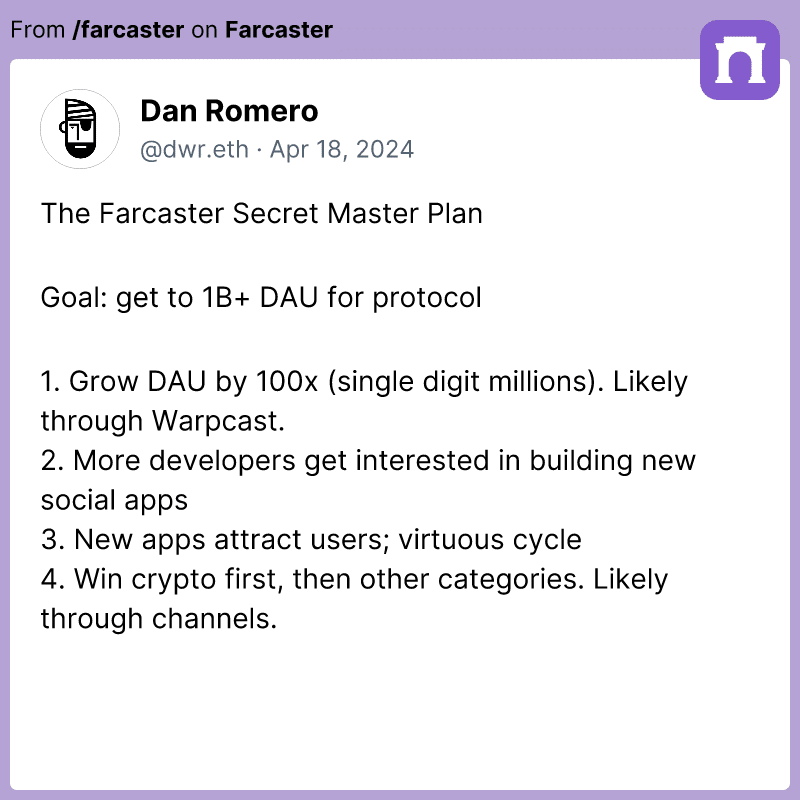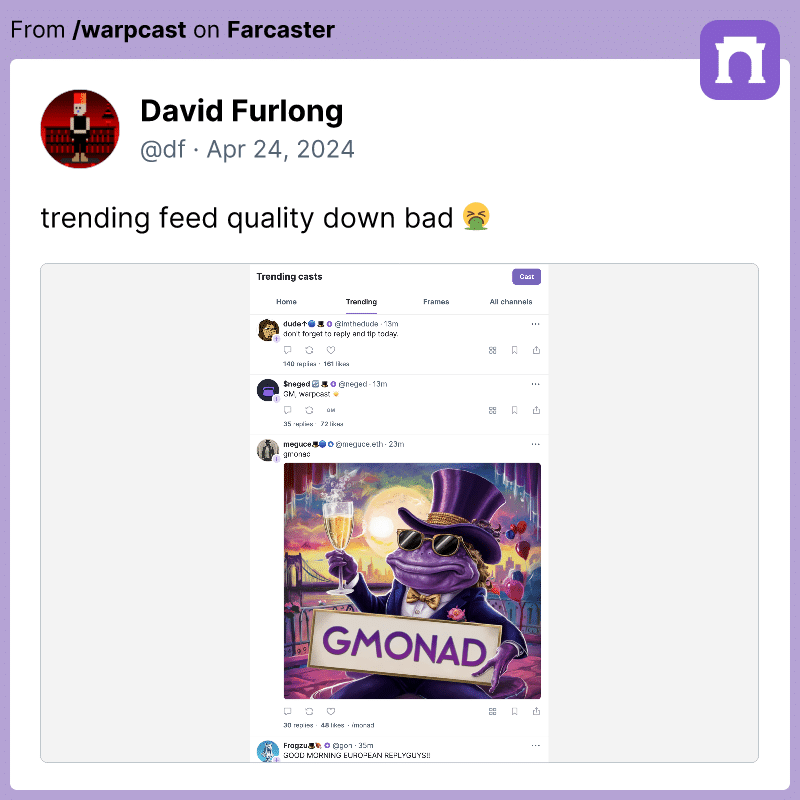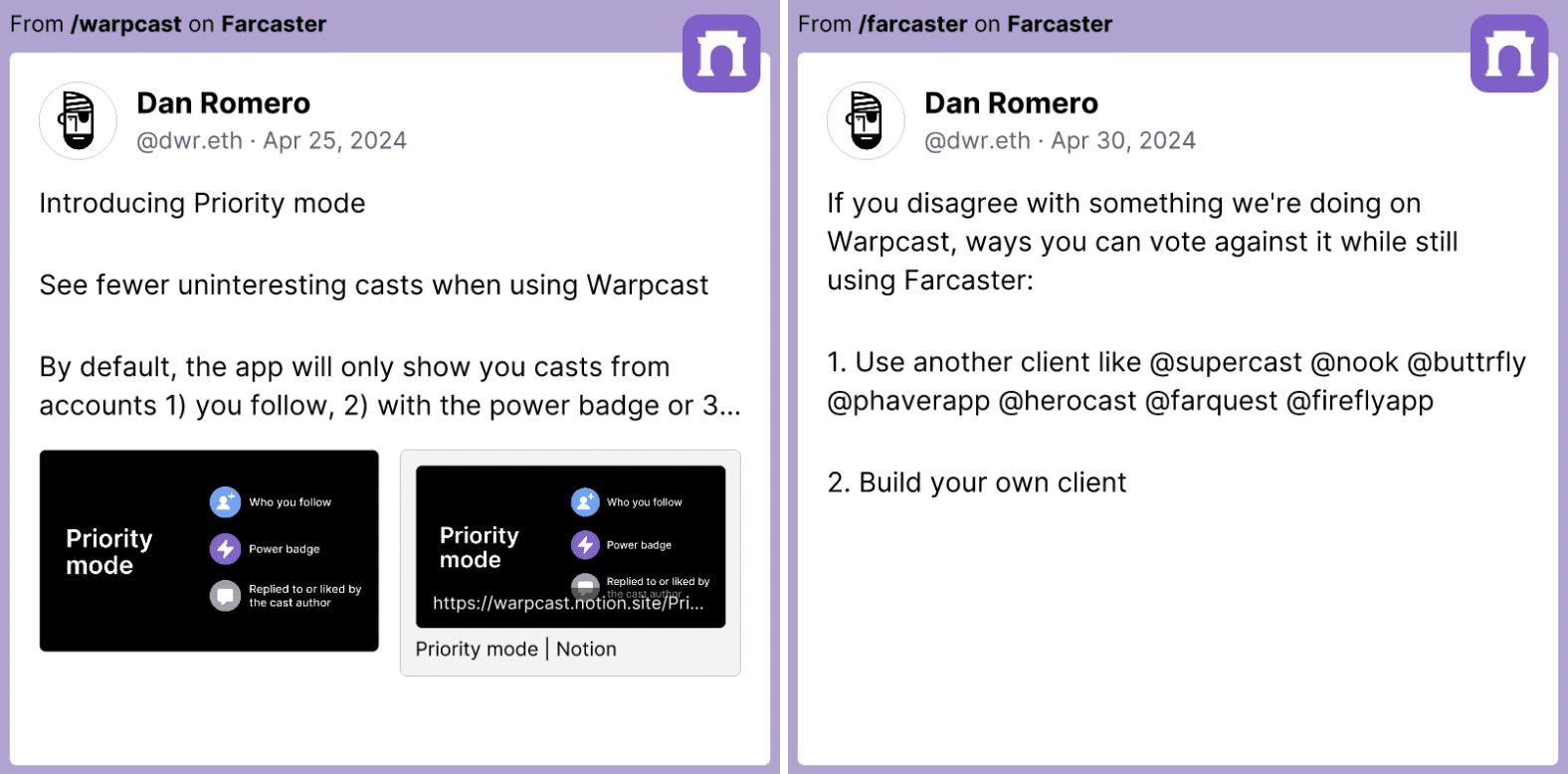Ask who to follow on decentralized social network Farcaster and everyone will point to Ted.
Despite being relatively unknown on “crypto Twitter,” with less than 3,000 followers there, Ted’s boundless curiosity for Farcaster interspersed with insights into her daily life propelled her to influencer status (190k+ followers) on the new social network, benefiting in part from being an early adopter, nabbing an eye-catching three-letter username and a spot on the network’s auto follow list.
“One of my favorite accounts and one of the most popular Farcaster users is Ted,” said Linda Xie, who is building Bountycaster — a bounty service on Farcaster — and who sits within the top 20 Farcaster accounts by followers alongside Ted.
“She represents the Farcaster community to me because everything is asked in good faith and very honest and transparent,” Xie said.
Farcaster is a social network that is a cross between X (Twitter) and Reddit with a Web3 twist. While there’s some similarities to X, such as following and posting, engagement on the network is a marked change from “crypto Twitter,” which at times, Xie said, has become an echo chamber where people only post content that will get engagement and go viral rather than engage thoughtfully in critical discussions about the industry.
The channels aspect of Farcaster, areas dedicated to specific topics, adds a Reddit-like element to the network and results in more people asking questions and engaging in discussions.
“[On] early Farcaster, it didn’t necessarily matter who you are, or where you came from,” said Ted, who doesn’t disclose her full name and is often initially mistaken for a man based on her username. “A lot of the relationships that were being built and the connections that were being made were rooted in the basis of what thoughts are you contributing?”
Who and What to Know
This thoughtful discussion on Farcaster stems from the fact that it’s “a builder-heavy community,” Xie said. One of the most popular channels is the founders channel where people are willing to share lessons learnt and be vulnerable, she said.
“You don’t see the same extent of dunking culture happening like you do on Twitter or some other scaled social networks,” said Li Jin, co-founder of venture firm Variant and active participant on Farcaster. “And that probably has to do with the fact that it’s still relatively smaller.”
“Everyone is maybe one or two hops removed from each other, and you still feel like it’s a more intimate, safe place than an open platform like Twitter,” Jin added.
Jesse Pollak, who is the creator of Base and the second most-followed account on Farcaster, also describes the network’s energy as “builder-centric in a positive way.” Base is one of the leading channels on Farcaster with over 210,000 followers.
Some of the most popular channels are dedicated to larger themes such as frontend development and design. There’s even ones on books, F1, Taylor Swift, and sardines.
As a new user, channels can be a good place to start to find like-minded people, said Jacek Trocinski, founder of Degen, the project behind Farcaster’s unofficial community token DEGEN.
Discussions are set to move from channels to IRL as over 500 “casters” head to Venice Beach in California this week for FarCon. The conference, which is organized by the Farcaster community, has seen exponential growth just like the protocol. Around 70 attended the first FarCon last year.
Farcaster’s Daily Active Users (DAUs) have surged 1,695% since the start of this year going from 2,000 users to 35,900, according to data from The Block Research. DAUs are Farcaster’s equivalent to “liquidity in a DeFi protocol,” said Dan Romero, who is the co-founder of Merkle Manufactory, the company behind Farcaster, on the Unchained podcast.
this is maybe the highest DAU/MAU in crypto? https://t.co/sJBMRXjEYL
— Li Jin (@ljin18) April 5, 2024
Both FarCon and the Farcaster protocol are described as being “sufficiently decentralized.” Romero explained that Farcaster is “decentralized as necessary, but no more” as otherwise it impacts the network’s user experience; a strong UX is vital to helping Romero reach his ambitious goal of onboarding a billion plus users.
Farcaster was first built on Ethereum and then migrated to Ethereum layer 2 blockchain Optimism. Farcaster’s onchain features — such as creating an account — are all stored on Optimism, while user actions — such as following a user — are stored within Farcaster’s offchain system, a peer-to-peer network of Hubs.
Farcaster still remains an Ethereum centric community, having only just shipped support for Solana addresses. The Bitcoin channel, for example, only has 5,000 followers, far fewer than the 143,000 in the Ethereum channel or the 13,000 in the Solana channel.
Farcaster remaining crypto- and developer-centered is all part of Romero’s “master plan” for getting to a billion-plus daily active users. Ted likewise says that for Farcaster to win over mainstream users, it first has to win crypto.

The Farcaster “Incubator”
Part of the attraction of Farcaster for so many crypto builders is that it’s Web3 native and allows for so much experimentation. Frames is a unique tool that enables developers to build onchain functions — such as minting NFTs or playing a game — directly into a cast.
“We always say that Farcaster is the new Y Combinator because it feels like you’re in an incubator,” said Kelly Werder, also known as nounishprof on Farcaster.
Werder hosts the GM Farcaster podcast alongside Adrienne Shulman, who is known as adrienne on Farcaster. The thrice-a-week podcast breaks down the happenings within the Farcaster ecosystem. Shulman and Werder are on Degen’s Trocinski must follow list alongside Cooper Turley, who runs onchain music label Coop Records.
Turley sits within the top 10 most followed accounts on the network. Despite having a similarly large following on X, he transitioned to posting more on Farcaster, drawn to the openness of both the protocol and the conversations on it.
“The idea that a single team couldn’t just pull away all this information from us was really valuable because I’ve seen businesses have to change because of Twitter or Reddit API pricing changes,” said Bountycaster’s Xie, describing the benefits of having permissionless access to Farcaster’s social graph.
The launch of community token DEGEN earlier this year was also a big win for creators as they get rewarded for quality content through a tipping mechanism. Casters get a daily allocation of DEGEN for tipping, which they spend by replying to casts with the phrase “amount $DEGEN.” But this development has also led to an increase in spam.
Both Farcaster and Degen do have measures in place to prevent spam. Users pay an annual $5 fee to cover Farcaster storage costs, which is also expected to work as a disincentive to fake accounts. And to get a Degen tipping allowance, users must cast at least three times and own at least 10,000 DEGEN ($190).
Still, Turley has experienced an influx of users begging for DEGEN tips in his replies, while Warpcast’s trending feed fills up with meaningless posts about the token.

Farcaster has a unique challenge compared to other social networks in that DEGEN launched permissionlessly, so developers are playing catchup to filter out the low quality content, said Variant’s Jin.

Beyond Crypto Twitter?
A cohort of creators who were not previously popular on X are developing powerful “really powerful onchain audiences,” Turley said.
GM Farcaster’s Shulman and Werder are two of those individuals. People are drawn to GM Farcaster because it’s short and offers a rare opportunity for the global Farcaster community to communicate synchronously via its livestream, Shulman said.“When a big Twitter account comes over to Farcaster, if that account is not active — or posting new or differentiated content — then it’s not going to be as well received because people can just see through that.” Turley said. For brand new users, it’s an uphill battle and getting to that first 400 followers “is not easy,” Turley noted.
Both Turley and Ted’s incredible growth comes in part from the auto follow list, designed to provide “conversational liquidity” in Warpcast’s early days. Now Warpcast and other Farcaster clients need to make sure new users — who want to develop followings — also feel seen, even with exponentially more people on the network, Turley said.



